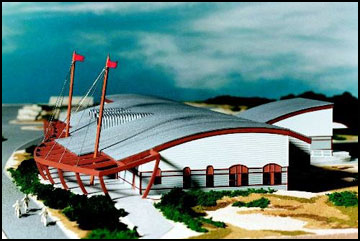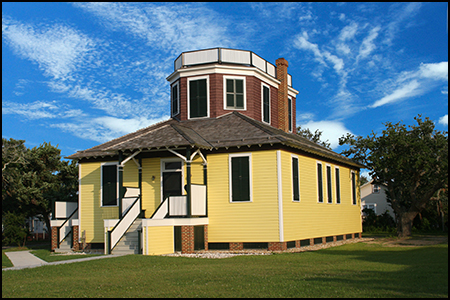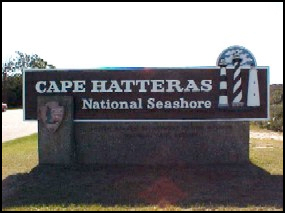|

|
|
|
| Hatteras
developed slowly over time, with no plat, no lots neatly laid out, and
no grid plan. The town developed as a result of its
natural harbor and its location on Hatteras Island. By the
early
1780s, there was a small settlement at Hatteras village located in protected wooded
tracts on the sound side of the island. Today
the
Village still maintains much of the charm of her past while providing
the comforts of the present as a world class cultural and vacation
destination. |
|
Graveyard of the
Atlantic Museum
The
Graveyard of the Atlantic Museum is a public, non-profit, educational
institution. It is part of the North Carolina Maritime Museum System
within the State History Museums, Division of Archives and History,
Department of Cultural Resources. The Museum is dedicated to the
preservation, advancement and presentation of the maritime history and
shipwrecks of the North Carolina Outer Banks from the earliest periods
of exploration and/or colonization to the present day, with particular
emphasis on the period from 1524 to 1945. The Museum preserves,
researches, exhibits and interprets its collections for the benefit of
the general public and specialized audiences. The Museum serves its
diverse audiences in order to inspire appreciation, encourage
discovery, and promote an active, responsible understanding of the
maritime heritage of the Outer Banks in itself and in relation to that
of the United States and the broader history of seafaring. ... Learn
More
|
 |
Hatteras
Village Guided Tour
 |
Whether
you choose to walk, bike, or ride in a car or a golf cart, exploring
the historical buildings and landmarks is a great way to spend time in
the Village. Take along the brochure provided below for
insight
into the history and location of buildings, marinas, cemeteries,
churches, public beaches and community services.
Download
Brochure and Print your copy
|
Hatteras Weather
Bureau Station
The
first US Weather Bureau Station managed by the Army Signal Services on
Hatteras Island was established at the Cape Hatteras Lighthouse
Keepers' Quarters in 1874, moved to the Hatteras Life-Saving Station on
December 1, 1880, and later transferred to a Hatteras Village private
residence, known as Styron’s Building, on October 1, 1883.
A few years later, the Weather Bureau built a structure for the station
in Hatteras village for the sum of $250. This building was a small
one-story framed structure consisting of three rooms, two of the small
rooms were each about 9 by 6 feet and one larger one about 14 feet
square. There was also a small attic that was used for storage.
Cape Hatteras, where the Gulf Stream and Labrador Current meet, was an
important location for weather forecasting. Residents that lived on the
Outer Banks received their news by boat or through word of mouth.
Residents of isolated Portsmouth and Ocracoke Islands got word of an
approaching storm in sealed tubes dropped from airplanes. Cape
Hatteras, a major shipping route, was also a common place for
shipwrecks. The Weather Bureau felt that the need to have a main
station on the North Carolina coast was important enough for them to
build one in Hatteras Village....Learn
more |

The Weather
Bureau Station has been restored. It is open to the public as
an Outer Banks Visitors Bureau welcome center. |
Cape
Hatteras National Seashore
 |
Hatteras
Village
is
located in Cape Hatteras
National Seashore,
America's first national seashore. The islands that make up
the
seashore have been home to Native Americans, farmers, watermen, slaves,
lighthouse keepers, surfmen, and many others who continue to shape the
heritage of the area. The people have witnessed events that include
hurricanes, the death of Blackbeard the pirate, Civil War battles, the
construction of its now famous lighthouses, the birth of the USCG in
the lifesaving stations, hundreds of shipwrecks, Billy Mitchell’s test
bombings, Reginald Fessenden’s first radio broadcasts, the building of
dunes by the CCC, scientific strides in weather forecasting, u-boat
attacks, and much more. Though some of the actual history has been lost
in time, the culture found in the people, places and stories lives
on....Learn more |
 |
|






